Sold! Torcross Sunrise
Torcross Sunrise was purchased during the SHAF Arts Trail – a two-week exhibition at Beacon House from 13 October until 29 October.
WHAT IS THE SHAF ARTS TRAIL?
The SHAF Arts Trail is an annual event in which SHAF members open their studios, or inhabit galleries and other exhibition spaces, and welcome visitors to see their art. At each venue, artists were happy to discuss their art-form, explain the processes involved and provide the opportunity for their visitors to view, appreciate and buy unique pieces of work.
Following the Arts Trail also gave visitors an unusual opportunity to explore the glorious South Hams as they mapped their route and discover more and more artists’ venues (as well as cream tea venues).
This was my third year with the SHAF Arts Trail. Having two weeks instead of one – and coinciding with half term week when we have more visitors to Salcombe – has provided us with more than double the number of visitors in previous years.
I’ve also enjoyed greater success in that four paintings have been sold – and many, many of my fine art greetings cards too.
Why did I paint Torcross Sunrise?
Prior to purchasing Beacon House four years ago, Anne and I had three years of upheaval. We had a flat which we couldn’t occupy due to renovations imposed by the management, and then our attempts to sell the flat took forever. We had to rent somewhere to live instead. And we had four different rentals in the space of three years.
Seven weeks were spent in Torcross and this view was what greeted me at dawn. How could I not paint it?
Are there other paintings done at that time?
Yes, I painted two other paintings during that 7-week rental: Slapton Ley and Torcross.
Between them, they show the view from the upstairs lounge window of that rental.
To the left, Slapton Ley shows the Ley, and the causeway which separates it from the sea beyond.
To the right,Torcross shows the tank memorial and then the houses at Torcross.
You’ll notice that I didn’t include the public toilets!
Both paintings are watercolours and capture the variety of weathers seen from our rental.
Torcross was sold some time ago but Slapton Ley is still for sale.
Affordable art
Both designs are available as fine art greetings card, although the images have been cropped to fit the square design of my cards.
Are there other paintings of that coastline?
Yes: an acrylic called Torcross Wave.
This acrylic painting is still available for sale but is one of the designs that I did not use for a greetings cards.


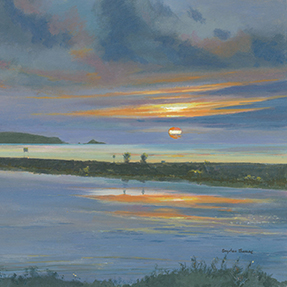
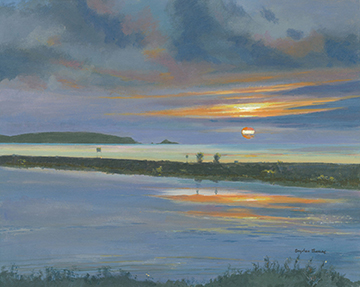
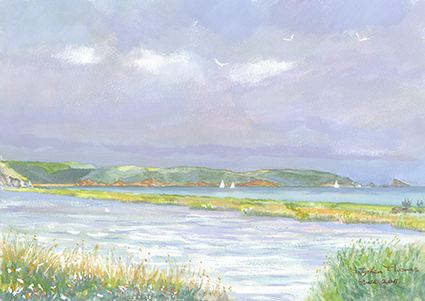
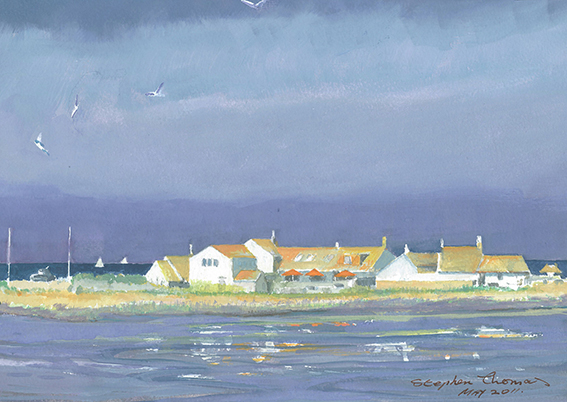
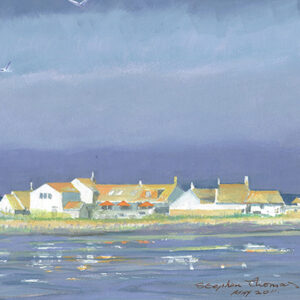
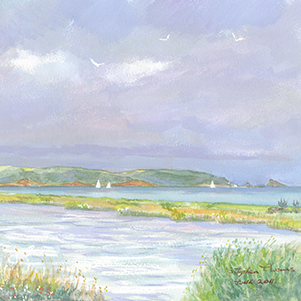
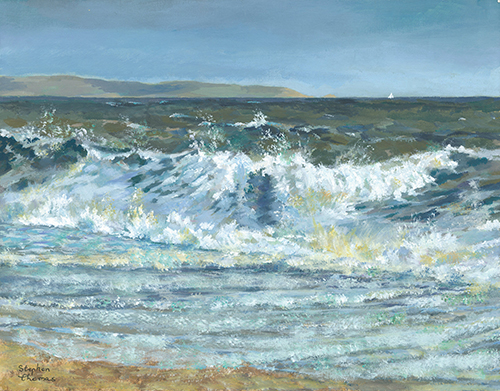
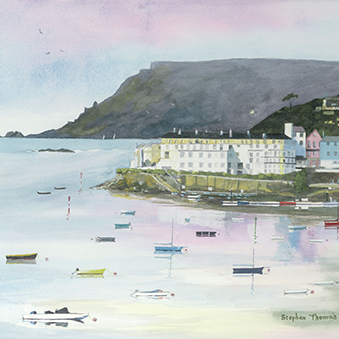
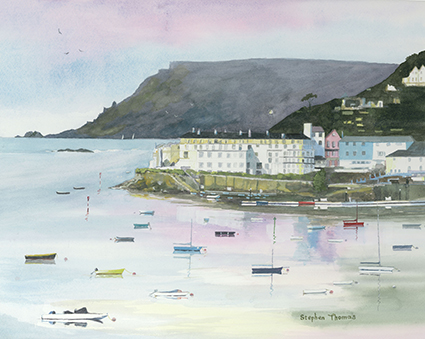
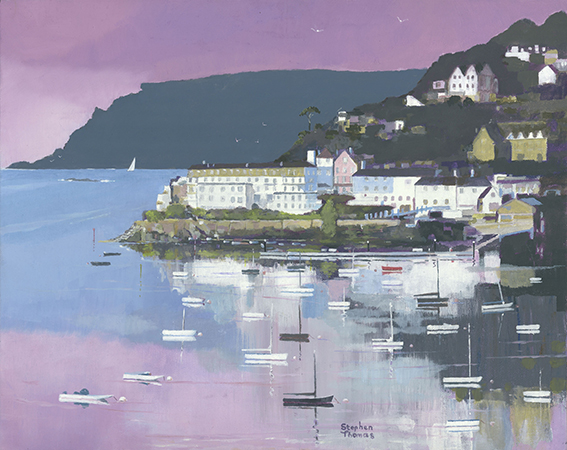
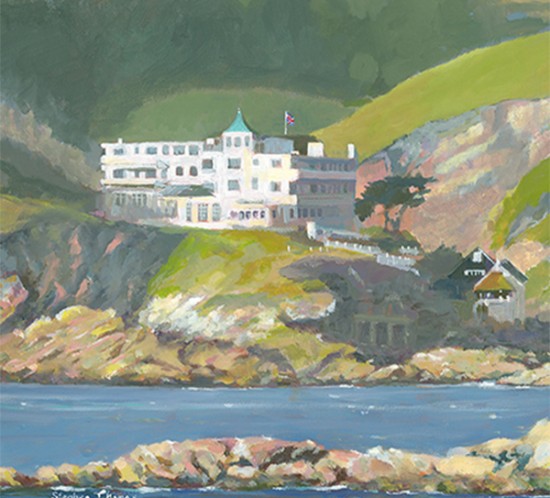
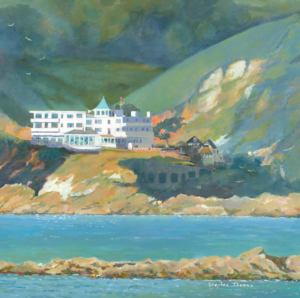
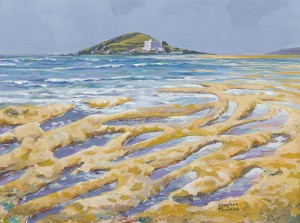
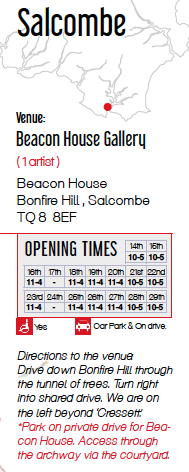 This year, the SHAF Arts Trail runs for two whole weeks, including half-term week, until 29 October.
This year, the SHAF Arts Trail runs for two whole weeks, including half-term week, until 29 October.